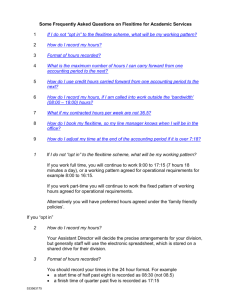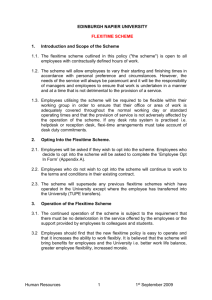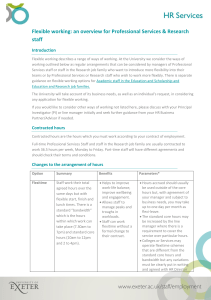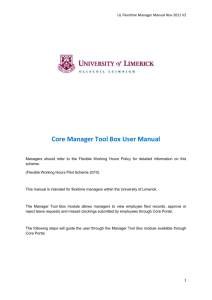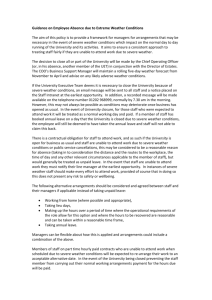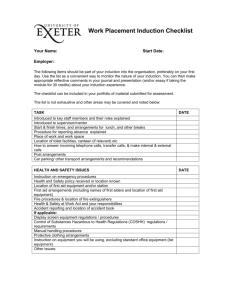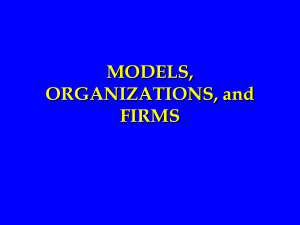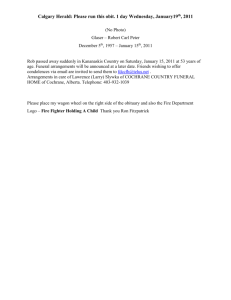flexitime scheme
advertisement
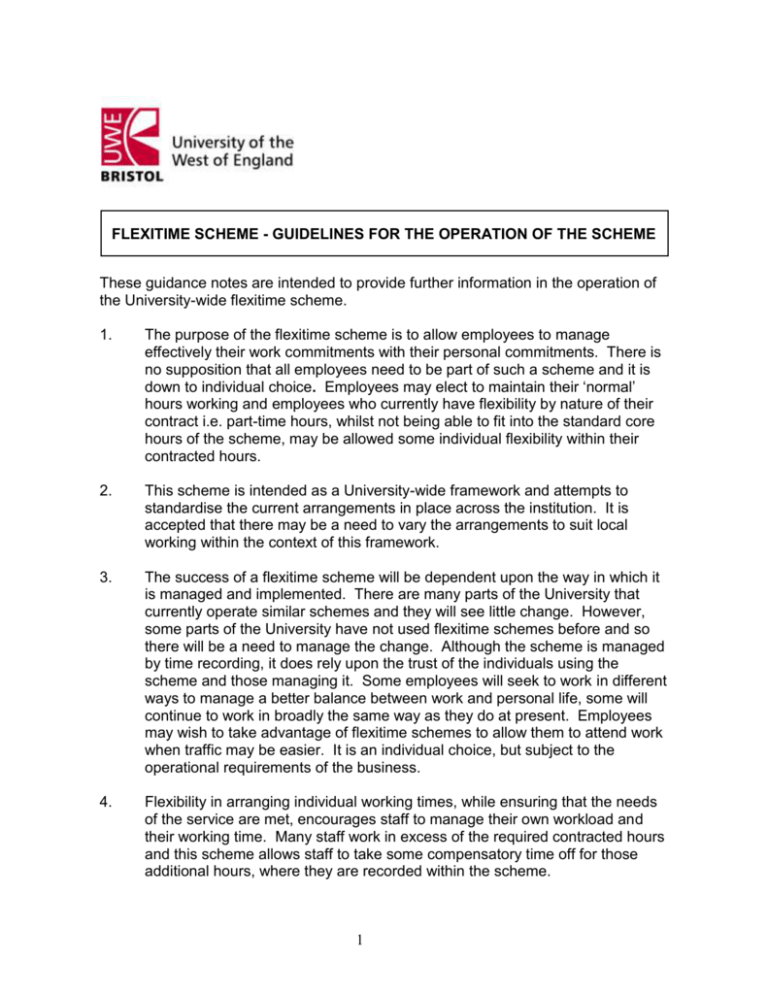
FLEXITIME SCHEME - GUIDELINES FOR THE OPERATION OF THE SCHEME These guidance notes are intended to provide further information in the operation of the University-wide flexitime scheme. 1. The purpose of the flexitime scheme is to allow employees to manage effectively their work commitments with their personal commitments. There is no supposition that all employees need to be part of such a scheme and it is down to individual choice. Employees may elect to maintain their ‘normal’ hours working and employees who currently have flexibility by nature of their contract i.e. part-time hours, whilst not being able to fit into the standard core hours of the scheme, may be allowed some individual flexibility within their contracted hours. 2. This scheme is intended as a University-wide framework and attempts to standardise the current arrangements in place across the institution. It is accepted that there may be a need to vary the arrangements to suit local working within the context of this framework. 3. The success of a flexitime scheme will be dependent upon the way in which it is managed and implemented. There are many parts of the University that currently operate similar schemes and they will see little change. However, some parts of the University have not used flexitime schemes before and so there will be a need to manage the change. Although the scheme is managed by time recording, it does rely upon the trust of the individuals using the scheme and those managing it. Some employees will seek to work in different ways to manage a better balance between work and personal life, some will continue to work in broadly the same way as they do at present. Employees may wish to take advantage of flexitime schemes to allow them to attend work when traffic may be easier. It is an individual choice, but subject to the operational requirements of the business. 4. Flexibility in arranging individual working times, while ensuring that the needs of the service are met, encourages staff to manage their own workload and their working time. Many staff work in excess of the required contracted hours and this scheme allows staff to take some compensatory time off for those additional hours, where they are recorded within the scheme. 1 5. The core hours are defined as such so that, where staff are due to be at work, they should be present undertaking their duties during that period of time. The core hours in the standard scheme are set at 10.00 to 12.00 noon and 14.00 to 15.30. These are the standard core hours that should be used for normal working arrangements and could be varied to suit operational arrangements within the service area. 6. Absence during core hours (flexitime) may be agreed with managers for the purpose of attending routine appointments, e.g. doctor/dentist appointments. The employee would, on that basis, use their own ‘banked’ time to attend such appointments. However, there may be exceptional individual circumstances where attendance at appointments for hospital visits or doctors is not of a routine nature. In these circumstances, managers should, in discussion with the individual, consider whether some other arrangement may be appropriate. Managers may refer to their Personnel Adviser for support/guidance in these cases, to ensure that a consistency of application is maintained. 7. Flexitime applies equally to all individuals within a work group, where they have elected to participate in this way of working. However, if the operation of that particular area of work requires a reasonable minimum number of people to be present at certain times of the day, e.g. reception, then managers may, in discussion with the staff, determine the required number and enable the workgroup to make their own arrangements, to ensure that the standards of cover are maintained. 8. If a member of staff is eligible for overtime payments and is ‘required’ to work, i.e. she/he is requested by the manager to work outside the normal working hours (defined as the contractual hours), consideration should be given as to whether overtime payments are applicable. Where staff choose to work beyond the normal working times, then this would be considered flexible time that can be recorded under the scheme and time off taken where appropriate. 9. The maximum flexileave available under this scheme is two days, i.e. equal to the credit carry over of 15 hours. As with any leave request, taking of flexileave must be agreed in advance with the line manager. The scheme does not provide employees with an ‘entitlement’ to this leave within the next accounting period, as there may be occasions when it is not operationally possible to allow blocks of leave to be taken within an accounting period. 10. The flexitime scheme does require monitoring and managing to ensure that there are sufficient resources available to deliver the service. Managers will need to ensure that sufficient resources are available and that when agreement to take flexileave is given, this does not then cause undue pressure on the remainder of the team. Working together in teams and supporting each other’s flexibility will ensure the success of the scheme for everyone. 2 11. Employees are required to complete flexitime recording sheets that can either be completed manually or by using a spreadsheet which allows automatic calculation. Each department/faculty may determine the best way of maintaining a monitoring and auditing process. It is not expected that a rigorous checking process be required. Employees who choose not to take part in the flexitime scheme would not be expected to complete forms. 12. Where there are staff groups or individuals who currently have flexible working arrangements on a personal basis, these would normally remain where they are mutually beneficial. However, either the employee or the manager could seek to review such arrangements if appropriate, and where it may be more beneficial to take part in the flexitime scheme. 3
